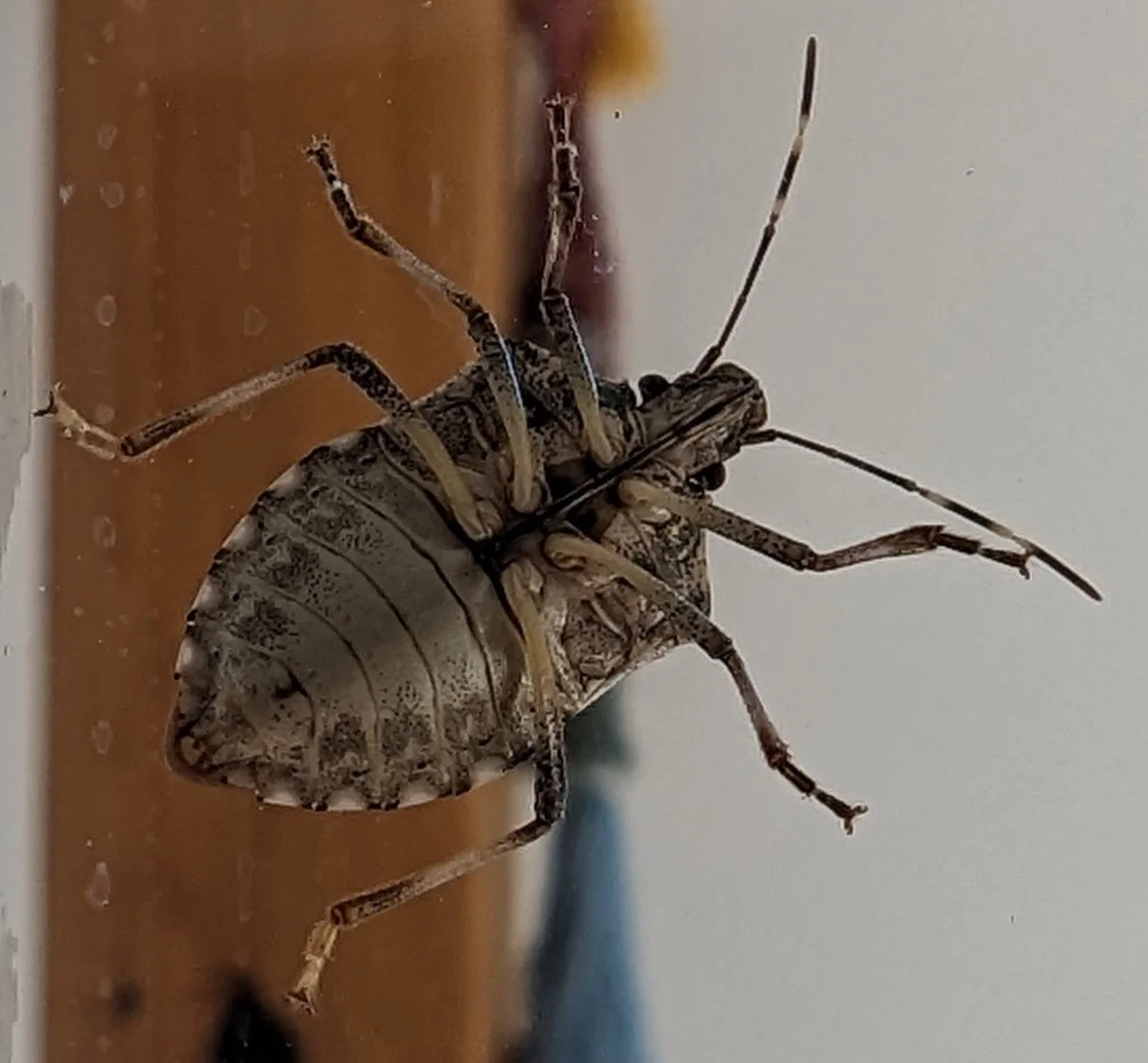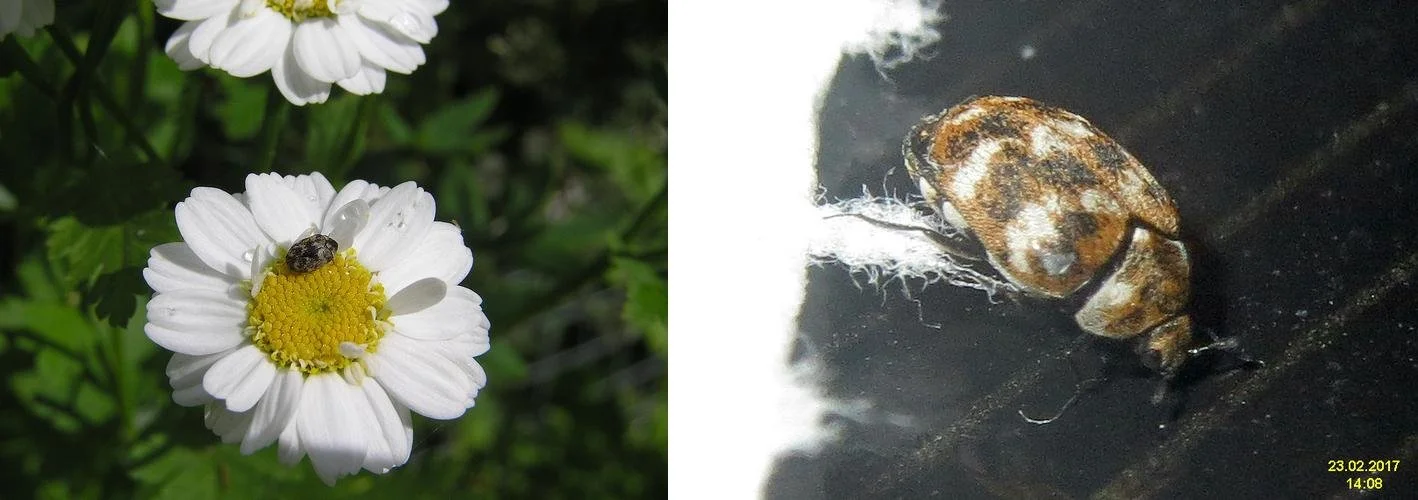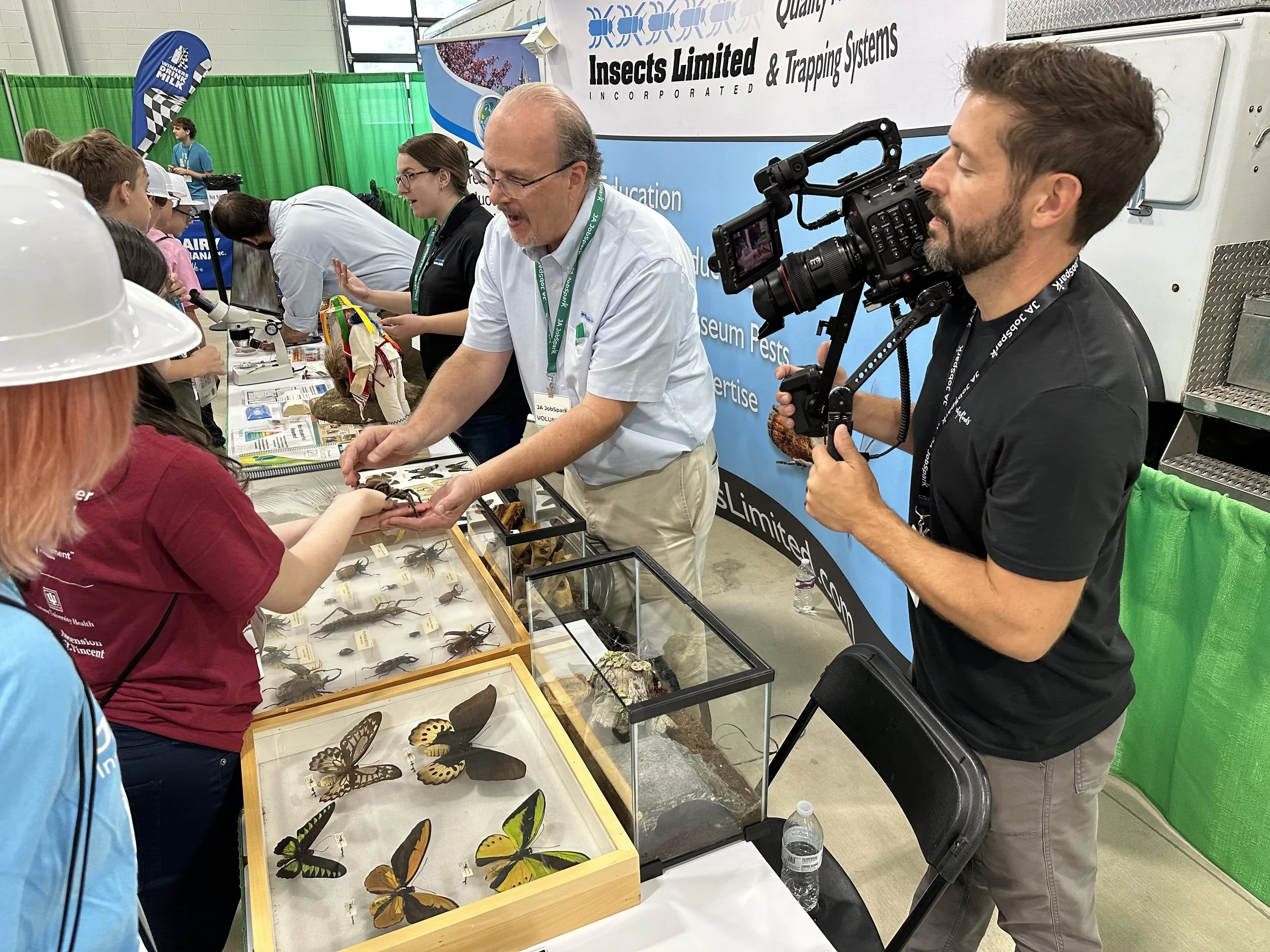How Education and Exposure Reduce Fear of Insects
By Samantha Kiever, Research Entomologist, Insects Limited
Everyone, no matter how ambivalent or straight-up enthusiastic toward arthropods, has a story about an encounter that made their skin crawl. For me, it was waking up with a brown marmorated stink bug on my neck when I was five.
As a result, I couldn’t tolerate their presence in any capacity, and just smelling one was enough to give me anxious palpitations. For others, it might be a traumatic experience battling fleas or bed bugs or simply being startled by a spider darting out from under a piece of furniture.
The stuff of nightmares to a five-year-old future-entomologist
These experiences provoke fear, disgust, or aggression that can stay with us for years. Yet, we don’t typically hold lifelong grudges in other areas of life, so why do we reserve them for harmless little invertebrates that have no intention of harming us? The gut-level reaction we have to insects isn’t just a personal quirk.
It’s the result of how we’ve been taught to interpret the presence of these animals in our lives as well as what we don’t know about them. In the end, what we understand (or don’t) is often the biggest factor that shapes how we feel and react.
Maggots are strongly associated with decay, such as rotting food and waste
Ancient Machinery in Modern Times
To understand why people recoil at the sight of insects, we have to begin with a deeply rooted emotion: disgust.
Disgust is an evolutionary defense against contamination. It helps us avoid harmful pathogens such as rotting meat, waste, or diseasecarrying animals, perceived or actual.
Many arthropods, especially those that move unpredictably or are associated with decay, activate this reflex. It’s why cockroaches and maggots elicit such strong reactions.
From a survival perspective, avoiding them made sense.
But that ancient defense now operates on modern terrain.
Outdoors, insects are accepted and expected. Outdoors, insects are expected. They belong to the natural world. Even if we dislike them, we understand that a beetle in the woods or a spider on a porch is simply part of the environment and comes with the territory of sharing a ginormous spinning rock with oodles of other lifeforms. Indoors, though, their presence disrupts something more psychological. Homes are places we associate with safety, order, and cleanliness.
As urban living has advanced, and homes have become more sealed and sterile, the expectation has become stricter: a good home is controlled and devoid of life outside what has been granted explicit permission to be there (usually in the form of friends, family, and pets, of course). When even a harmless little insect such as a cricket appears inside, it feels like a threat not because of what it is, but where it is. more detail.
Even to a trained professional, seeing a carpet beetle outdoors inspires little to no ill feelings, while the same insect indoors can be alarming because of its potential to cause problems. Photo (left): Photo: Anthrenus verbasci (Varied Carpet Beetle) by Ben Sale, Stevenage, UK, 2006. CC BY 2.0 via Flickr. Photo (right): Anthrenus verbasci (Variegated Carpet Beetle) by David Short, Windsor, UK, 2017. CC BY 2.0 via Wikimedia Commons
This context-based response is at the heart of the urbanization–disgust hypothesis. A 2021 study by Fukano and Soga found that people in more urban environments were more likely to fear insects indoors, where their presence clashed with expectations of cleanliness and control. The key factor making those responses worse? A lack of insect knowledge.
This pattern appears elsewhere. In a survey of Arizona residents, 88% expressed negative feelings toward arthropods found indoors. But that number dropped significantly to just 42% of the same respondents when the insects were outdoors. A similar study in Minnesota confirmed this trend, showing that attitudes toward arthropods shift dramatically depending on context.
If disgust can shift depending on context, what happens when we deliberately change that context?
The Power of Reframing
Research shows that education can override fear, even when that fear is strong. In multiple controlled studies, participants who received brief educational experiences, especially those involving live arthropods, showed significantly lower levels of fear and disgust. In one study, pre-service teachers who handled live spiders were more comfortable afterward and more likely to include spiders in their teaching. Those changes remained steady for more than 15 weeks.
Insects Limited has used this same approach to inspire folks of all ages to fear arthropods less and perhaps even consider career paths they might have previously written off because of their discomfort around arthropods.
It goes further. Educational exposure doesn’t just reduce fear, it increases curiosity, improves risk assessment, and even encourages conservation behavior. One study showed that students who learned about endangered tarantulas not only feared them less but also expressed stronger concern for their protection.
In short: while disgust may be hardwired, our reactions are not. They can be softened or even transformed by learning. This connection between education and emotional response plays out far beyond the lab. It’s visible in classrooms, workshops, and even offices. The more we know, the more comfortable we become.
That same transformation plays out quietly every day in professional and personal settings, especially when people who aren’t trained entomologists find themselves working with insects. I asked a number of Insects Limited team members from different departments how working in such an arthropod-focused environment has or has notThat same transformation plays out quietly every day in professional and personal settings, especially when people who aren’t trained entomologists find themselves working with insects. I asked a number of Insects Limited team members from different departments how working in such an arthropod-focused environment has or has not changed their perspectives. Here is what they had to say:
“Before joining Insects Limited, I never enjoyed being around insects, let alone have them in my house.
Now that I’ve been here 3 years, I have a much better understanding of insects, why they are around
and what they could be after. I still don’t love them but know there are many resources out there if I
should encounter a problem.”
“Before joining the team, I honestly didn’t think much about insects, other than trying to keep them out of
my house. But after being surrounded by people who are so passionate and knowledgeable, and seeing
the critical role insects play in ecosystems and agriculture, I’ve developed a whole new appreciation for them. I still don’t love when one surprises me in the kitchen, but I do find myself noticing and respecting
them a lot more now.”
“Exposure to insects has completely transformed my perspective—what once felt gross and scary now sparks genuine curiosity and wonder, and I’m fascinated to learn more about these incredible
creatures.””
What This Means for Pest Management
That shift from discomfort to confidence doesn’t come from confrontation. It comes from education and exposure.
Understanding insects isn’t just about curiosity. It’s about control, not necessarily in the sense of elimination, but in how we manage our own reactions, decisions, and the consequences of those decisions in our homes, businesses, and ecosystems. Fear is loud. Disgust is immediate. But knowledge is steady. And unlike fear, knowledge doesn’t just stop us from overreacting, it helps us respond with purpose. It’s also something that we can choose.
That distinction becomes especially important in pest management, where hasty or emotionally driven choices can lead to wasted resources, unnecessary chemical use, or misdiagnosis of the actual problem.
Looking Ahead
In my next article, I’m going to share with you what happens when fear rather than knowledge drives pest management decisions. We’ll examine how inaccurate perceptions of insects can lead to counterproductive actions, and how educational approaches grounded in entomology can turn that trend around.
Because if you want to manage a pest, you have to understand it, and starting with the insect first means first getting to know the insect.
Sources & Further Reading
Fukano, Y., & Soga, M. (2021). Why do so many modern people hate insects? Urbanization–Disgust Hypothesis.
Hoogland, K., & Letourneau, D. (2022). Public attitudes toward insects and arthropods in Arizona. University of Arizona Cooperative Extension.
Sweet, L. E., Schell, C. J., & Shwartz, A. (2023). Familiarity doesn’t always breed contempt: Urban residents’ attitudes toward insects and wildlife. Animals, 13(3), 488.
Jacobs, C., et al. (2018). Teaching with spiders: Can fear be reduced? International Journal of Environmental and Science Education.
Reding, M. E., et al. (2015). Public perception of arthropods in Minnesota. Minnesota Department of Agriculture.
Schoelitsz, B., et al. (2018). Influence of the public’s perception, attitudes, and knowledge on IPM success. Wageningen University.
University of Freiburg (2012). Psychoeducation reduces spider fear in children. ResearchGate.






